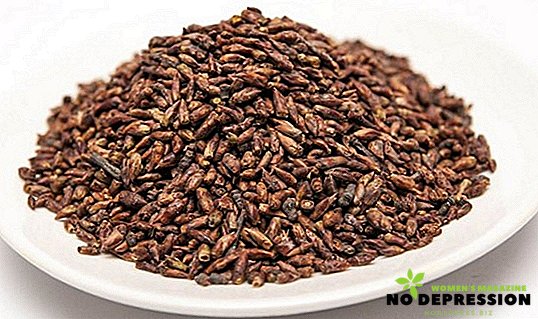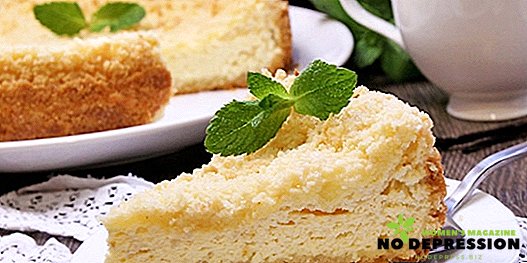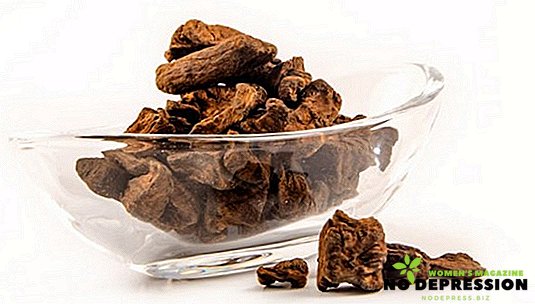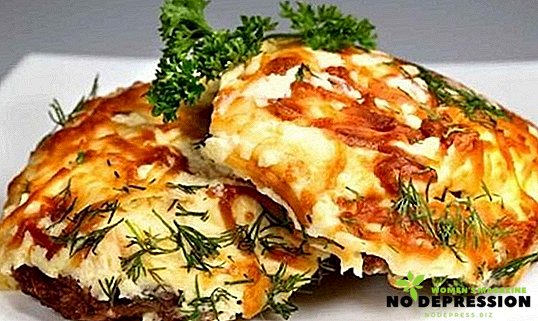Seborrhea (another name for seborrheic dermatitis) is a disease in which the sebaceous glands malfunction. The skin begins to secrete a copious amount of fat having the wrong composition. As a result, there is a greasy luster and peeling.

Types of seborrhea, photo
Seborrhea manifests itself in places where the maximum number of sebaceous glands is concentrated — the forehead, auricles, the nose, and the scalp under the hair. But any part of the body can be affected.
With the defeat of the scalp seborrhea is accompanied by hair loss. Patients with seborrhea are not dangerous to others, the disease is not infectious and can not be transmitted from one person to another.
There are three main types of this disease: oily, dry and mixed.
Fatty
With this type of disease, the sebaceous glands begin to work actively. Because of this, yellow and brown greasy crusts can form on the skin surface. Fat seborrhea may be accompanied by the formation of acne, boils and other consequences of the excessive work of the sebaceous glands and clogged pores.

If the scalp is affected by seborrhea, the hair becomes greasy within a few hours after washing. The most serious consequence of this type is baldness. Therefore, it is important to consult a doctor promptly.
Dry
Symptoms of dry seborrhea - peeling and itching. This disease almost always occurs on the scalp. Its manifestation is dandruff. Most often, dry seborrhea exposed men.

In some cases, signs of both types may appear, in which case we are talking about a mixed type of seborrhea.
Causes and risk factors
Dermatologists identify several causes of this disease:
- Hormonal imbalance (this is the most common reason. The fact is that skin cells have receptors that respond to hormonal balance. When the androgens increase or the estrogens decrease, the sebaceous glands begin to secrete more secretion).
- Diseases of the digestive system.
- Improper care (for example, the use of inappropriate shampoo. As a rule, this leads to oily seborrhea).
- Hereditary factor (if the parent suffers from seborrhea, then with high probability, it will manifest itself in children).
- Excessive abuse of sunbathing.
- Transitional age (in this case, the disease passes to 25-27 years).
Often, seborrhea can occur in pregnant women and in menopause.
Our diet also affects the development of the disease, seborrhea can develop in people who abuse fast food, carbonated drinks, coffee, alcohol, sweet, excessively fatty and fried foods. In this case, to cope with the illness, you can simply go on a healthy diet.
Despite the prevalence of this disease, all the causes of the disease are still not known, research is actively being conducted today. But most experts believe that the probability of occurrence of the disease lies at the genetic level.
Drug treatment
To start the fight against seborrhea, you need to contact a dermatologist and pass tests for sex hormones. It is important to understand that this is really seborrheic dermatitis, and not other diseases with similar symptoms.
If you know about diseases of the gastrointestinal tract, then visit a gastroenterologist and undergo a course of treatment. In the case of diseases of the thyroid gland or endocrine system, you need to contact the endocrinologist, and women also to the gynecologist.
For the treatment of seborrhea, zinc and sulfur-based preparations are effective (Zincap, Persalan, Sulsen, Medis ointment and spray), and B vitamins are recommended for patients during treatment (Neurobex and Neurobex Neo).
These funds help to improve metabolism, and they also contribute to the normalization of hormonal levels. In case of a severe form of the disease, hormonal treatment can be prescribed - Ketoconazole, Terbinafine, Elokom and Fluconazole.
In the mild stages, when only smooth skin areas are affected with seborrhea, only antifungal agents can be prescribed, they can treat the skin with such drugs 1-2 times a week for a month. In the fight against the mild form of the disease, Skinoren, Neoderm, Bissam, Lamisil ointment help.
Massage with ointments, cryotherapy and ozone therapy, as well as acupuncture and darsonvalization also helps in combating seborrhea.
How to treat seborrhea of the scalp at home
 Change the washing and care products for skin and hair. It is best to contact a specialist (dermatologist or cosmetologist), who will help you to correctly choose suitable creams, shampoos and balms.
Change the washing and care products for skin and hair. It is best to contact a specialist (dermatologist or cosmetologist), who will help you to correctly choose suitable creams, shampoos and balms.
Well, try to avoid nervous shocks and stresses as much as possible. They also often lead to a malfunction of the body and provoke the appearance of the disease.
In the dry form of seborrhea also apply creams containing vitamin F.
It is important to follow the rules of personal hygiene, carefully and promptly clean the skin. Regularly degrease the skin with special cosmetics. Learn to wash your face twice a day with warm water, then cool.
Shampoo
During the treatment of the disease, it is necessary to use specialized antifungal shampoos that can be purchased at the pharmacy. Nizoral and Mikonisal will do. These remedies will relieve itching and reduce flaking. The composition of these shampoos is ketoconazole.
Pharmacy shampoos are used at least twice a week during treatment, and for prophylaxis - once every two weeks. More frequent use can only aggravate the problem.
Folk remedies
In combination with traditional medicine you can resort to popular recipes. By the way, they also act as a good prevention of the disease. The best plants against seborrhea are nettle, oak bark, sage and all parts of burdock (root, juice, burdock oil).

Here are some recipes for home remedies:
- A teaspoon of burdock oil mixed with the same amount of honey, add the juice of one onion and two teaspoons of juice of burdock leaves. Mix with therapeutic shampoo and apply gruel on the scalp. Cover with cling film and thick towel. The mask should be kept for about an hour, then rinse thoroughly. Conduct a similar procedure should be once a week for a month.
- 20 g of dry nettle pour a liter of boiled water and let it brew for about two hours. Rinse your hair with this infusion after each wash, gently rubbing the decoction into the scalp. The course of treatment lasts from three to six months.
- 25 g of oak bark pour 500 ml of water and hold on a water bath for about five minutes. Strain the infusion, add one teaspoon of honey and leave for an hour. Mix the broth with honey in the ratio 1: 1 and rub into the scalp. Hold the mask for about an hour and then wash it off. Such a tool will require 8-10 applications.
- In 250 ml of boiled water, add a tablespoon of sage leaves and keep in a water bath for 15 minutes on low heat. Broth strain and rub into the affected skin.
If the disease has affected the smooth integument, then you can use a mask of cucumber. It is enough to cut the fruit into thin slices and apply on the affected areas, hold for about 20 minutes. This procedure can be repeated 2-3 times a week.
Diet
 Change your diet: refuse from food with a high sugar content, excessively fatty foods, alcoholic and carbonated drinks, coffee. The menu of people suffering from seborrhea, you must include the following foods:
Change your diet: refuse from food with a high sugar content, excessively fatty foods, alcoholic and carbonated drinks, coffee. The menu of people suffering from seborrhea, you must include the following foods:
- pork, beef and chicken livers;
- sea kale and broccoli;
- dairy products (cottage cheese, cheeses, butter, cream and milk);
- fresh vegetables and fruits;
- nuts (almonds, hazelnuts, pistachios, peanuts) and dried fruits. Also turn on wild rose berries, viburnum and sea buckthorn (you can make teas or special decoctions from them);
- cereals (buckwheat, oatmeal, barley);
- fish and seafood (salmon, squid, pike perch).
It is also necessary to provide the body with enough liquid - drink 1.5-2 liters of water per day. If you are overweight or increased physical activity, then the amount of water you drink should increase.
In addition, you can eat fresh juices and smoothies. But refuse packaged juices - they contain a large amount of sugars and preservatives that only harm your skin.
Useful during treatment will be jellies and aspic. The fact is that in the composition of gelatin is agar-agar, which has a beneficial effect on skin cells.
During treatment, food should be baked, boiled or steamed, fried foods should be discarded. Since its preparation produces a large amount of fat and harmful substances that adversely affect the work of digestion and skin condition.
Preventive measures
For the prevention of disease should follow the rules of hygiene. Try to avoid stressful situations and be less nervous. More often walk in the fresh air, the sun exposure within reasonable limits will also be useful. Sunbathe only at a safe time before 12 and after 16 hours and do not forget about sunscreen. Sulfur and mineral baths will also benefit.
Even after a disease retreat, be careful with your diet, limit foods with simple carbohydrates — white bread, milk and white chocolate, jam, white rice, and so on. Discard spicy and canned food.
Regularly take vitamins of group B, as well as A, E and C. They will help in the fight against relapse of seborrhea and yeast in capsules.
If you have problems with the thyroid gland or a tendency to hormonal disruption, regularly visit the doctor and undergo an examination.
Try to get enough sleep and play sports. In case of overwork or neurosis, resort to sedatives. It is also necessary to correctly select cosmetics and regularly visit a cosmetologist to clean the pores.
If we are talking about periods with an increased risk of hormonal changes (transitional age, pregnancy, menopause), try to treat your skin as carefully as possible and be prepared that the disease will often return.
Take it easy, because sooner or later your hormones will recover, and the disease will recede, excessive experiences can only exacerbate the problem.
In the fight against such an unpleasant illness as seborrhea, the main thing is to consult a doctor in time and determine the cause of the disease. Properly selected treatment and compliance with all recommendations will help save you from seborrhea and the unpleasant consequences of the disease. Unfortunately, there are frequent cases of relapse, so try to comply with the above preventive measures.












